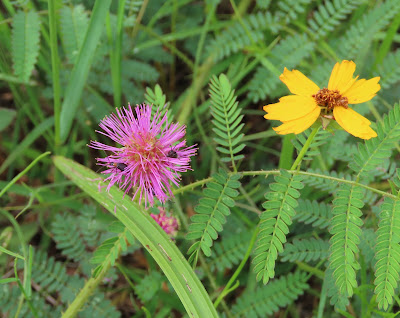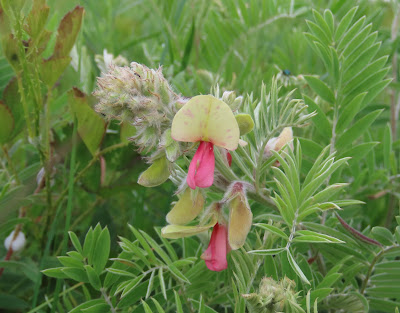NOTE: This is an update of my original blog post from August of 2010, with some new images.
Among insect architects, the Blue Mud Dauber, Chalybion californicum, is not Frank Lloyd Wright. What it does have going for it is a remodeling career. Oh, and a reputation as a fierce enemy of black widow spiders.
Blue mud daubers are solitary wasps in the family Sphecidae. Females take over abandoned nests of their cousin, the Black and Yellow Mud Dauber, Sceliphron caementarium, or, in many cases, evict the larval tenants and food stores of active mud nests. While Sceliphron gathers mud to make her nest, Chalybion carries water to an old nest to soften it and remold it to her needs. The result is a very lumpy version of the normally smooth Sceliphron nest.
Chalybion makes up for any engineering deficiencies with a persistent, clever, and energetic approach to catching prey. The female wasp is able to land on a spider web without getting entangled, then do a convincing impression of an insect that is in distress. She vibrates the web and draws the spider out. The poor arachnid comes dashing down a thread expecting dinner and instead seals its own doom. The blue mud dauber stings the spider into paralysis and flies it off to her nest.
Among the known spider hosts for the blue mud dauber are black widows, specifically the Southern Black Widow, Latrodectus mactans. For a highly entertaining account of this I recommend chapter five (“The Terrible Falcons of the Grassland”) in Hunting Big Game in the City Parks, by Howard G. Smith (New York: Abington Press, 1969). Additional spider hosts include mostly other cobweb weavers, family Theridiidae, small orb weavers (Araneidae), and the odd lynx spider (Oxyopidae), crab spider (Thomisidae), or jumping spider (Salticidae).
Mud daubers in general stuff a multitude of spider victims into each mud cell before finally sealing it with a curtain of mud. A single egg had been laid on the very first spider stored at the bottom of the cell. The wasp larva that hatches then gradually consumes all the spiders, leaving a smattering of legs as the only indication there was ever anything else in there with them. The mature larva then spins a papery silken cocoon inside which it pupates. A few weeks later (or come spring if it was overwintering) an adult wasp chews a round hole in the end of the cell and exits. Holes in any other part of the mud nest indicate that some kind of wasp parasite chewed its way to freedom instead of the mud dauber.
Male mud daubers are far less industrious than their female counterparts. Their sole mission is to father the next generation.
Meanwhile, they are content to sip nectar from flowers or extrafloral nectarines. They also like oozing sap from wounded trees and, perhaps most of all, the “honeydew” secreted by aphids and scale insects. Both genders of mud daubers like this delicacy, which is nothing more than the sugary liquid waste produced by those sap-sucking buggers.
After a heavy day of drinking, males may gather in “bachelor parties” to sleep it off during the night. These congregations of normally solitary wasps can cause a bit of anxiety in people who confront them. Take a look at this image and comment thread for an example.
It should be noted that there are actually two species of Chalybion found north of Mexico. C. californicum is transcontinental in the U.S. and southern Canada, while C. zimmermanni ranges from Tennessee and North Carolina south to Florida and west to Texas, Arizona, and into Utah. I am curious as to whether these specimens I photographed in southern Arizona are C. zimmermanni given the white, not dark, hairs on the thorax; and the smoky, rather than violaceous, wing coloration (see below).
Enjoy making your own observations of these wasps. They are not the least bit aggressive and, because they often nest on the exterior of buildings, are easy to watch.
Sources:
Bohart, R. M. and A. S. Menke. 1976. Sphecid Wasps of the World. Berkeley: Universithy of California Press. 695 pp.
Eaton, Eric R. 2021. Wasps: The Astonishing Diversity of a Misunderstood Insect. Princeton, New Jersey: Princeton University Press. 256 pp.
Krombein, Karl V. et al. 1979. Catalog of Hymenoptera in America North of Mexico. Washington, DC: Smithsonian Institution Press. Vol. 2, pp 1199-2209.

























































